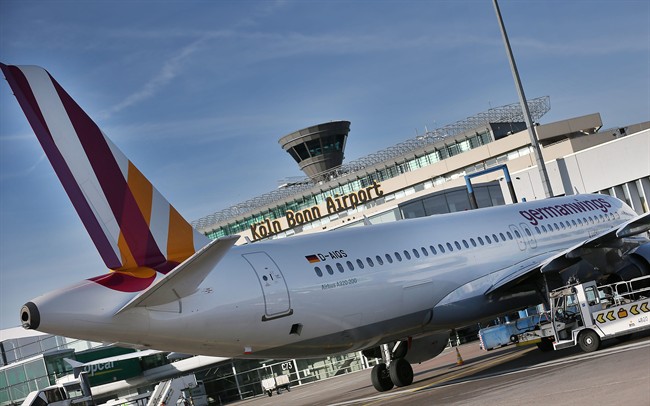TORONTO – On Tuesday, word spread about the deadly crash of an Airbus A320 in the Alps en route from Barcelona, Spain to Dusseldorf, Germany. French Prime Minister Manuel Valls confirmed Tuesday there were no survivors among the 150 people on board.

Though the cause of the crash is unknown, Airbus is sending technical advisors to the scene to assist with the investigation.
The A320 is one of Airbus’s most popular planes. The aircraft first went into service in March 1988. In a statement on Tuesday, Airbus reported that as of February 2015, there were 6,200 A320s in service worldwide. The fleet has accumulated 150 million flight hours in more than 85 million flights.
READ MORE: 150 feared dead in Germanwings 9525 Airbus crash
This particular plane — an A320-211 — had logged about 58,300 flight hours in more than 45,000 flights.
According to the Aviation Safety Network, the A320 has had a total of 55 accidents, with 27 hull losses, or the complete loss of a plane.
- 16-year-old child of billionaire tech CEO reported missing
- U.S. tourist faces 12-year sentence for bringing ammo to Turks and Caicos
- Canada refused to repatriate woman from ISIS camp because she can’t be arrested: internal memo
- Bombardier, Airbus get exemptions from Canadian sanctions on Russian titanium
The most recent A320 disaster was on Dec. 28, 2014, when an AirAsia plane went missing over the Java Sea. On Dec. 30, the remains of the plane and several bodies were recovered. All passengers and crew on board — 162 in total — died. The accident is still under investigation, though in January, the Indonesian Minister of Transport reported that the plane climbed at an abnormally high speed — about 8,000 feet per minute — and then stalled. Normal speeds are about 2,000 feet per minute.
READ MORE: Infographic: Is 2014 the year of airline accidents?
The worst accident involving an A320 occurred in 2007 when TAM Linhas Aéreas crashed while landing at São Paulo-Congohas Airport in Brazil killing 187 people. It was determined that the plane’s ground spoilers — which are located on the wing to slow an aircraft down — did not activate.
Here at home, Air Canada has a fleet of 41 A320s. The airline has never had an accident involving the aircraft.



Comments